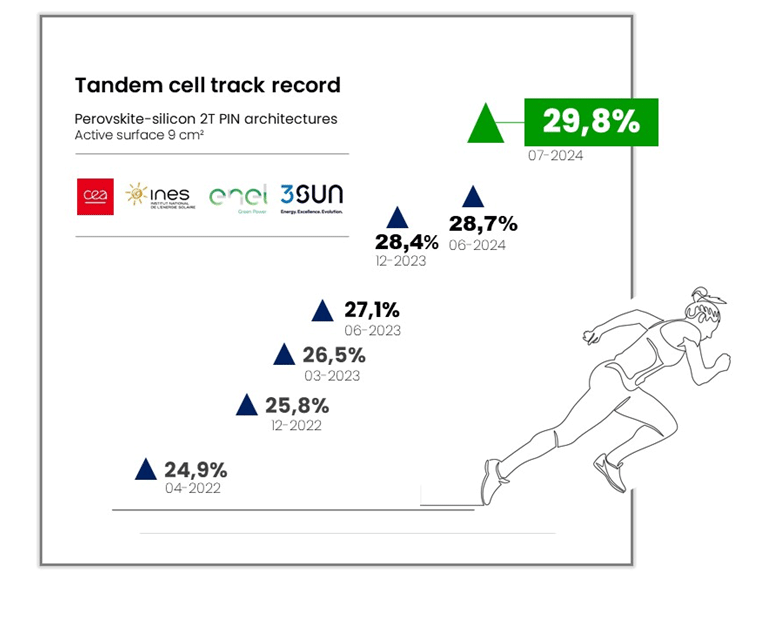This result marks a new stage in the development of our PIN-type 2-terminal tandem cells. Step by step, our know-how is evolving, our expertise is growing and the results are consolidating our position: 26.5% in March 2023, then 27.1% in June 2023, 28.4% in December 2023, 28.7% last June and now 29.8%, for devices showing a Voc greater than 1900 mV.
Why are we pointing out the 9 cm² active surface area of these cells? Well, most of the efficiency records published internationally relate to a surface area of 1 cm². Our teams are naturally looking for the best performance, together with stability over time, and for larger surfaces, so that we can get to industrial production as soon as possible. The surface is a real challenge! And we're already addressing it in our developments. 3SUN (part of ENEL Green Power), the first European gigafactory, is opening its new high-efficiency heterojunction silicon photovoltaic panel production lines in Sicily this year. Its capacity will reach 3GW and includes the production of cells and panel assembly.
Perovskite on silicon photovoltaic tandem cells? Our decoding:
Perovskite materials have been exciting the solar community since 2012, when their photovoltaic properties were first discovered. They pave the way for achieving conversion efficiencies of over 30%, at low cost, by combining them with a material such as silicon, which is the most commonly used material today. The combination of these two cells one on top of the other is referred to as a ‘tandem’. Scientific and technical advances in this field are proceeding fast, with the current certified world record at 34.6% on 1cm².
Since 2005, CEA-LITEN, INES and ITE INES2.S have been the reference centre in France and a major international player in research, innovation and training in photovoltaic solar energy.
